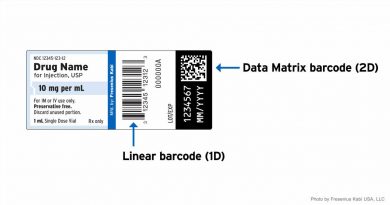Study IDs 3 COVID-19 Phenotypes, Could Help Guide Care
Researchers have found three distinct COVID-19 phenotypes of patients who present to the emergency department, information that could eventually guide treatment, they say.
Elizabeth Lusczek, PhD, an assistant professor in the Department of Surgery, and pulmonologist Nicholas Ingraham, MD, both with the University of Minnesota Medical School in Minneapolis, and colleagues described the three phenotypes in an article published online March 31 in the open-access journal PLOS ONE.
Most Are “Phenotype II”
Researchers analyzed electronic health records from 14 hospitals in the midwestern United States and from 60 primary care clinics in Minnesota. Data were available for 7538 patients with PCR-confirmed COVID-19 between March 7 and August 25, 2020.
Of the 7538, about 14% (1022) of these patients required hospital admission and were included in the study. Patient data included comorbidities, medications, lab results, clinic visits, hospital admission information, and patient demographics.
Most patients (613 patients, or 60%) included in the study presented to emergency rooms with “phenotype II.”
Patients who presented with phenotype II had a less frequent history of hepatic disease than phenotypes I or III. They typically had more moderate disease and about 10% mortality.
Almost one quarter (236 patients, or 23%) fell into “phenotype I,” or the “adverse phenotype,” which was linked with the poorest outcomes. These patients had the most hematologic, renal, and cardiac comorbidities (all P < .001). They were also more likely to be non-White (38.8% vs 45.6% vs 60.7%, respectively, P = .002) and more likely to be non-English speakers (47.9% vs 39.2% vs 23.7%, respectively, P < .001).
The racial/cultural gap was one of the most striking findings, Ingraham told Medscape Medical News, and has become the topic for a second paper coming out within a few weeks.
“That was really concerning,” he said. “We found that non-English speaking was significantly associated with hospitalization even when you control for race.”
Ingraham said the finding brings up questions of whether non-English speakers, for instance, have a poorer understanding of guidance from the Centers for Disease Control and Prevention.
Lusczek added that “we know that people who experience a lot of discrimination are at higher risk for heart disease and diabetes, and that may be playing out here.”
Those in phenotype I were older than patients in phenotypes II and III (67.2 [52.9, 79.0] years vs 60.9 [45.9, 75.4] years and 58.6 [34.8, 71.3] years, respectively, P < .001).
Lusczek told Medscape Medical News they also found markers of inflammation were much higher in the phenotype I group.
Phenotype III Was Smallest, Best Outcomes
The smallest group was “phenotype III,” or the “favorable phenotype,” and 173 patients (16.9%) fell into this group, which had the best clinical outcomes.
Those in phenotype III, surprisingly, had the highest rate of respiratory comorbidities (p=0.002) despite having the lowest complication and mortality rates. They were more likely to have had a history of smoking, alcohol abuse, and neutropenia.
Ingraham said as a pulmonologist he was intrigued by that finding. He said he has most of his patients with chronic lung diseases on inhalers and this finding might indicate inhalers are more protective.
“This helps point you in the direction you might look into next,” he said.
Those in phenotype III also had a 10% greater risk of hospital readmission compared with the other phenotypes.
Those in phenotype III were also more often female than patients with phenotype I or II (57.6% vs 41.6% and 53.4%, respectively, p = 0.002).
Overall, phenotypes I and II were linked with 7.30-fold (95% Confidence Interval [CI] 3.11-17.17, p<0.001) and 2.57-fold (95% CI 1.10-6.00, p=0.03) increases, respectively, in hazard of death compared with phenotype III.
“We couldn’t have guessed the difference would be 7-fold,” Ingraham said. “It really highlights the heterogeneity of how different COVID patients can be.”
Alexander Charney, MD, PhD, codirector of the Mount Sinai Clinical Intelligence Center in New York City, told Medscape Medical News this work is an example of the rich data available through EHRs, considering the millions treated for COVID-19 across the country.
“This is the first step before using the information to see how it should change care,” he said. “It helps us understand what’s going on here.”
The information may eventually help answer questions surrounding post-acute sequelae of SARS-CoV-2 infection (PASC), or long COVID, such as whether it is an accumulation of symptoms from people who were sick before they had COVID-19, Charney said.
“What will be very valuable,” he said, “is if the information could help predict at the time of admission who’s going to get one kind of symptom versus another.”
With a robust algorithm and further research on how to treat each phenotype, Charney said, a physician could then get an alert, such as, “there’s a 99% chance the patient will fall into phenotype I.”
It could also help with triage protocols, he said.
“Back when we were under siege in the spring of 2020, these types of algorithms didn’t exist. They could have been extremely helpful,” Charney added.
Treatments Lag
Treatment options are sorely needed for COVID-19 patients.
So far, only one pharmacotherapeutic agent, dexamethasone, has been linked with reduced mortality in at-risk individuals, the authors note.
“[P]atients could benefit from phenotype-specific medical care, which may differ from established standards of care,” the authors write.
Ingraham stressed that this study should not be used to alter practice.
“But what it does is give context clues on what we should be looking into next with a little educated guessing,” he said.
The work is supported by the Agency for Healthcare Research and Quality (AHRQ) and Patient-Centered Outcomes Research Institute (PCORI). The study authors and Charney report no relevant financial relationships.
Marcia Frellick is a freelance journalist based in Chicago. She has previously written for the Chicago Tribune, Science News and Nurse.com and was an editor at the Chicago Sun-Times, the Cincinnati Enquirer, and the St. Cloud (Minnesota) Times. Follow her on Twitter at @mfrellick
Source: Read Full Article



